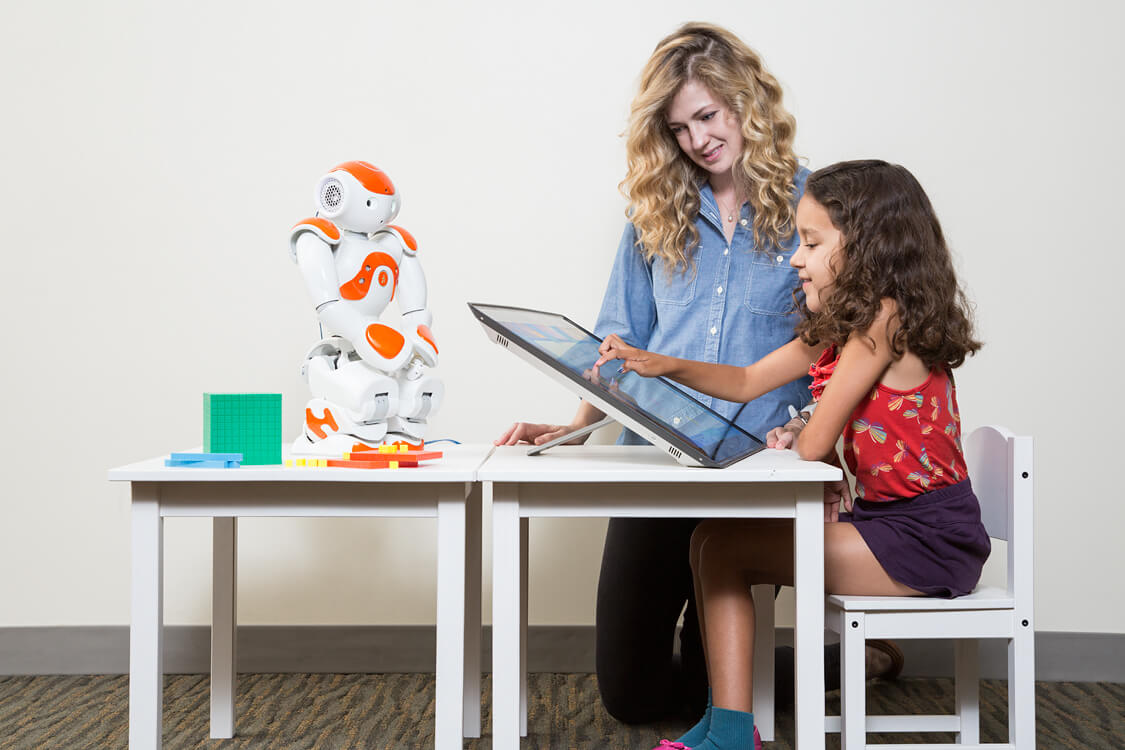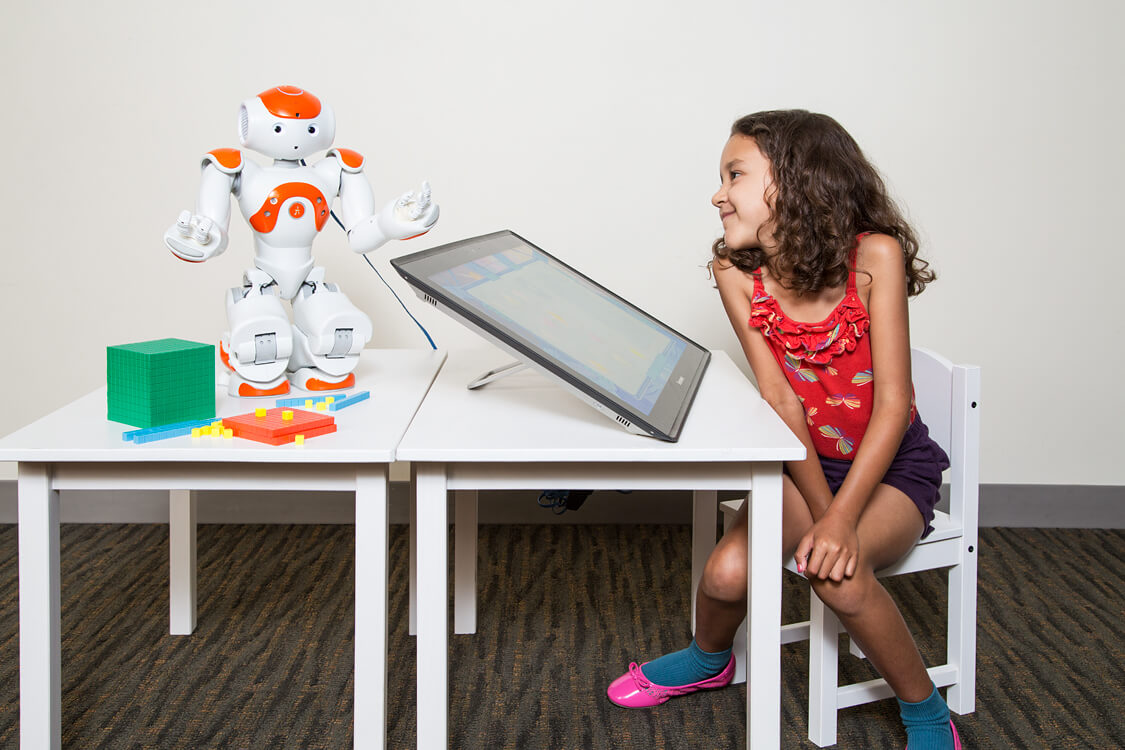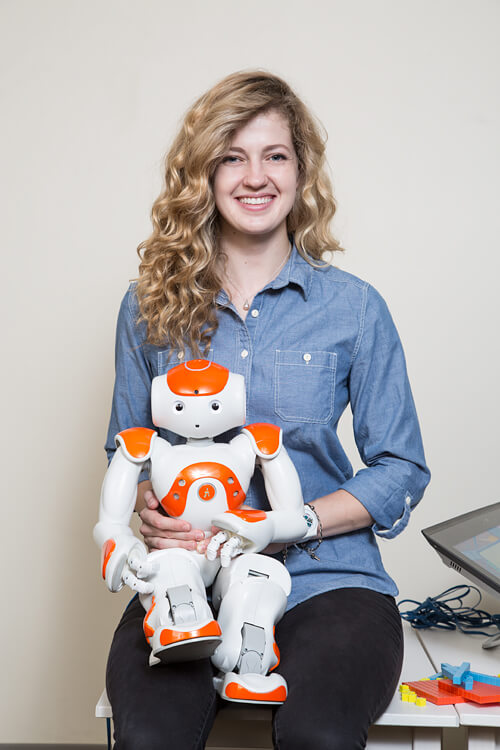Marooned Robots Love Math
Four-year-old Sally wants to have some fun.
Instead of playing with her Legos or watching “Dora the Explorer,” the preschooler decides she would rather do some math — with her buddy, the robot.
Heading to her desk, Sally turns on her tablet, waiting expectantly for her robotic friend to talk.
“I’m Vega! I’m a robot space explorer,” the robot, which rests near her tablet, says in a childlike voice. “I’m visiting all the planets and the stars in the universe, but I’m stuck here on Earth and can’t get back home. Will you help me?”
Of course Sally will.
“I want to bring moon rocks home to show my friends. Will you help me pack some?” the robot asks. “Will you put five rocks into the box?”
Sally looks at the graphics appearing on her screen and, with her finger, drags five rocks into the animated box. “Great job!” the robot says.
The robot continues to ask Sally to perform tasks that require her to understand basic addition and subtraction as well as number names and numerical representations. When she makes a mistake, the robot encourages her to try again. If she has difficulty with a particular number, an algorithm automatically modifies the exercises to her skill level. After 20 minutes, Sally finishes.
“Thanks for helping me! Now I can go home to my friends,” the robot says joyfully, breaking into dance and waving good-bye.
A science fiction novel? A scene from a TV show?
No, a robot under development to engage young children in math activities, reinforcing teachers’ lessons.
Child learning is a natural domain for SAR, as children learn best through personalized and tangible face-to-face interaction.
“Socially assistive robotics [SAR] is a rapidly growing area of human-robot interaction that focuses on robots that help people through social rather than physical interaction,” said Maja Matarić, the Chan Soon-Shiong Professor of Computer Science, Neuroscience and Pediatrics at USC. “Child learning is a natural domain for SAR, as children learn best through personalized and tangible face-to-face interaction.”
For more than a decade, Matarić and her research team have studied ways in which robots might provide one-to-one personalized care to assist people with Alzheimer’s disease, stroke patients, children with autism and the elderly. In all cases, the robots supplement the efforts of caregivers, clinicians, educators and family members.
Now, they hope to create SARs that “give children personalized access to mathematical education to develop those skills early,” said Caitlyn Clabaugh, a Ph.D. student in Matarić’s lab who studies machine learning and robots.
For the past two years, Clabaugh has worked on the game. She has programmed the robot, done some of the animation, and collaborated with artists, screenwriters and teachers to ensure that the robo-tutor engages children and meets federal math standards. Along the way, Clabaugh has made changes based on feedback, jettisoning squares and circles, for instance, in favor of the spaceship theme. “Kids are used to a polished look these days,” she said. “They want to see something compelling, not just blocks.”
As envisioned, such robots would eventually become available to young children everywhere, especially low-income students. That goal “fits with USC Viterbi’s [mission] to make computer science available to diverse audiences,” said Professor Gisele Ragusa, an expert in K-12 STEM learning.
Over the past two years, 49 low-income preschoolers in Los Angeles have experimented with the educational robots.
“They were fascinated with how the robots moved and talked,” said Marcia Cagigas, director of the Child Development Center at East Los Angeles College. “I think the robots helped reinforce some mathematical concepts in a new and interactive way.”






